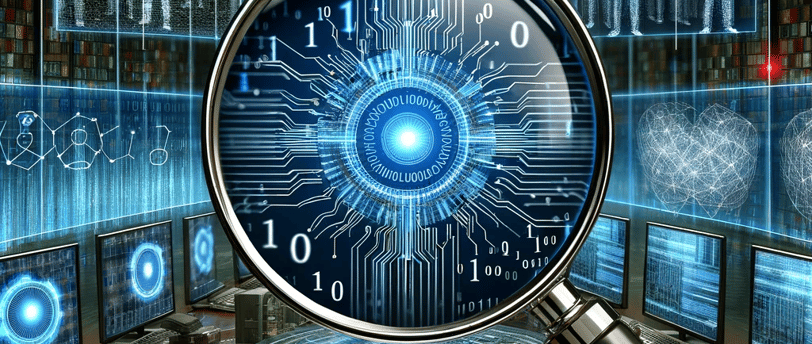Machine Learning in Cyber Forensics: Tracing the Digital Footprints of Cybercriminals
ARTIFICIAL INTELLIGENCE (AI) AND MACHINE LEARNING (ML) IN CYBER DEFENSE


Introduction
As technology continues to advance, so does the sophistication of cybercriminals. To combat this growing threat, the field of cyber forensics has emerged, utilizing machine learning techniques to trace the digital footprints of these criminals. In this blog post, we will explore the steps involved in using machine learning in cyber forensics and the role of each step in identifying and tracking cybercriminals.
Step 1: Data Collection
Before any analysis can be performed, a large amount of data needs to be collected. This data can include network traffic logs, system logs, and file metadata. An image that could illustrate this step is a magnifying glass searching through a pile of digital data.
Step 2: Data Preprocessing
Once the data is collected, it needs to be preprocessed to remove noise and irrelevant information. This can involve tasks such as data cleaning, normalization, and feature extraction. An image that could illustrate this step is a technician cleaning up and organizing a messy pile of data.
Step 3: Feature Selection
After preprocessing, the next step is to select the most relevant features for analysis. This involves identifying the key characteristics that can help differentiate between normal and malicious activities. An image that could illustrate this step is a scientist carefully selecting specific features from a dataset.
Step 4: Model Training
With the selected features, a machine learning model is trained using labeled data. This involves feeding the model with known examples of cybercriminal activities to teach it how to recognize similar patterns in new data. An image that could illustrate this step is a machine being trained by a group of experts.
Step 5: Model Evaluation
Once the model is trained, it needs to be evaluated to assess its performance. This is done by testing it on a separate set of labeled data to measure its accuracy, precision, recall, and other relevant metrics. An image that could illustrate this step is a scientist examining the results of the model's predictions.
Step 6: Deployment and Monitoring
After the model has been evaluated and deemed effective, it can be deployed in a real-world cyber forensics environment. It continuously analyzes incoming data, detects potential threats, and alerts cybersecurity professionals. An image that could illustrate this step is a team of experts monitoring screens displaying real-time data and alerts.
Conclusion
Machine learning plays a crucial role in cyber forensics by enabling the efficient tracing of digital footprints left by cybercriminals. By following these steps, cybersecurity professionals can leverage the power of machine learning to identify and track these criminals, ultimately contributing to a safer digital environment.
Image descriptions:
- A magnifying glass searching through a pile of digital data.
- A technician cleaning up and organizing a messy pile of data.
- A scientist carefully selecting specific features from a dataset.
- A machine being trained by a group of experts.
- A scientist examining the results of the model's predictions.
- A team of experts monitoring screens displaying real-time data and alerts.


